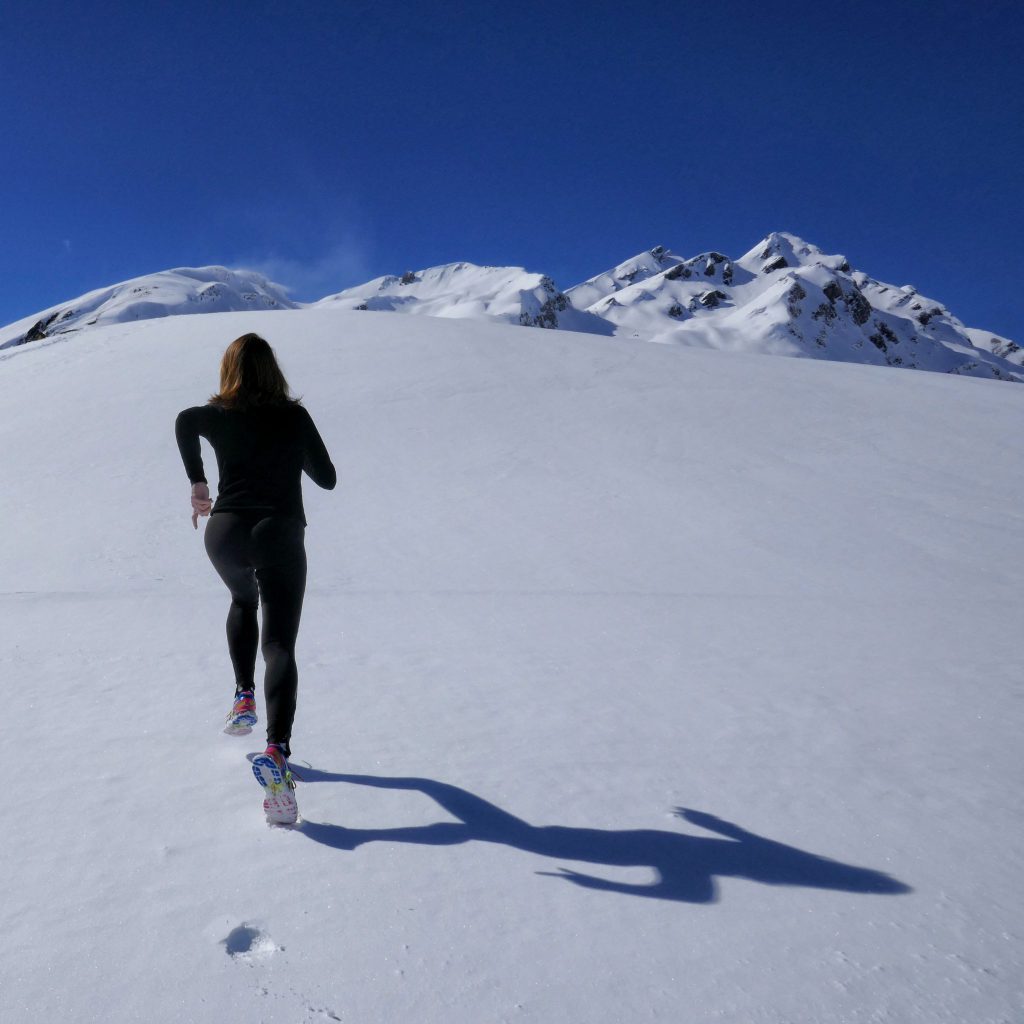RUNNING IN WINTER: PRACTICAL TIPS FOR BRAVING THE COLD

We often train much less in the winter. Falling temperatures and shorter daylight hours can be discouraging, but keen runners know they can’t let the cold stop them.
After a look at how to train in summer, let’s now consider how to deal with the pitfalls of winter to avoid the temptation of hibernating until spring.
Training in winter: keep your motivation high
You can train in winter if you take the right precautions, the first being the need to scale down training sessions.
Summer, with its milder temperatures and longer days, makes it easier to carve out time to run at the end of the day, even after work, or in the morning, without getting too cold. In winter, the dark and cold are strong deterrents to outdoor physical activity, but it’s fine to limit yourself to a 20-minute run.
Skipping training can cause a series of reactions that reduce your motivation and increase fatigue. The longer you stay still, the harder it is to restart, so in winter it is more essential than ever to be aware of your limits and keep your motivation high with small daily activities.
For example, even if it is a makeshift solution, a treadmill can be a good alternative on days when the lure of the sofa is too great to even think about braving the cold. Alternatively, simply set yourself a few days a week when you plan to do various types of training that are complementary to running, such as yoga and pilates, which are good for keeping the muscles elastic and toned.
Furthermore, a trick to encourage movement is to warm up in order to get both the muscles and the mind moving. In winter, stretching is even more important to increase body temperature, improve circulation and elasticity of muscles and tendons to limit the risk of injury due to inactivity and low temperatures.
Clothing: what to wear for running in winter
Appropriate clothing is essential for winter running, but overly heavy clothing can be counterproductive. The ideal solution is to layer up, wearing thermal tops under windproof but breathable jackets and suitable running shoes, which must be waterproof, suited to the shape of your foot and the type of route covered.
The areas of the body to be protected are above all the head, neck, hands and feet. In cold weather, these areas of the body, known as “cold spots”, because they are the first to cool down, can lose up to 70% of their heat. Gloves, socks, hats or neck warmers with insulating properties are therefore essential winter running clothes.
Obviously, clothing for running in winter depends above all on the climate: winter temperatures in Bolzano are not what they are in Florence, Rome or Palermo. It’s up to you to create your own personalised clothing scheme based on the temperature and your resistance to the cold. Once last piece of important advice: if you’re training in the dark, running along urban pavements, it is best to wear brightly coloured clothing or use reflective jackets.
Training even in the rain: here’s how
Many runners hate it, but you can train even in the rain. It is obviously better to avoid heavy downpours or strong winds but if you’re itching to get moving, wear running shoes and waterproof clothing, stretch for slightly longer than usual and brave the bad weather.
When it’s raining you should pay more attention to the potential hazards, such as surfaces that might be slippery when wet: shorten your stride to control your running better.
Choose the right diet
The cold season also brings about a change in biorhythms. Food is particularly important for athletes: more energy is consumed in cold weather, so you need more fuel when training, whether in the open air or on a treadmill.
Even in winter, a good and healthy diet for runners requires generous portions of seasonal fruit and vegetables to replenish the body with vitamins and mineral salts. Also, yes to carbohydrates, in addition to lean meat, poultry and fish. Before training, a light snack or energy bar is recommended, like Cetilar® Nutrition bars, which are formulated with essential nutrients and provide athletes with a reliable source of energy during physical activity.
The importance of hydration even in winter
In summer it is natural to drink a lot, less so in winter. It is a very common mistake but it’s better not to make it! Our body also needs to rehydrate and replenish the mineral salts used during physical activity: so it’s important to remember to drink before, during and after sporting activity. You could also enrich the water with sources of mineral salts like Hydral, the Cetilar® Nutrition supplement enriched with Sucrosomial Magnesium®, which contributes to reducing tiredness and fatigue.
To conclude, the best advice for dealing with the physiological slowdown that looms during the winter season is to listen to your body, treating it with respect and maintaining a healthy lifestyle.




